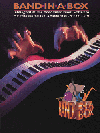| Rock
- type of Western popular music with American roots. Emerged from the Rock
'n' Roll of the 1950s. Usually based on solo voice and electric guitars.
Main Bands: Beatles, Rolling Stones, Pink Floyd and Queen |
|
| Rock 'n' Roll -
very rhythmic pop music. Prevailed in the late 1950s and early 1960s. This
music has a reputation of being young people's dance music. Main
figures: Elvis Presley and Chuck Berry, Little Richard, |
|
| Heavy Metal
- an aggressive style of rock, with fast and persistent beat, loud 'power
chords' (with heavy distortion effects) played on electric guitars and
extremely tough sounding singing. Main figures: Led Zeppelin,
Metallica and Jimi Hendrix |
|
| Funk, funky
- a style of black American popular music which developed since the mid-1950s
out of soul music. Main figures: James Brown |
|
| Rock ballad
- a ballad usually sung by a singer with rock instruments such as electric
guitar, organ etc. |
|
| New wave
- rock music from the late 1970s. Made after the punk rock era. Main
figures: Blondie |
|
| Dance
- 1990s electronic pop music style, characterized by repeated electronic
rhythms and loops. Main figures: Madonna and Janet Jackson. |
|
| Disco
- a style of 1970s pop-dancing music, with a steady and insistent beat,
developed from soul music, in response to the growing popularity of the
nightclubs for dancing - discos, discotheques. Main figures:
Donna Summer, Barry White, Village People, Gloria Gaynor and Boney M. |
|
| Waltz
- a piece of music for the ballroom dance named waltz, in triple time (in
3/4). |
|
| Swing
- a 1930s style of jazz characterized by 'big bands' (larger ensembles)
and very popular songs (called ' Tin Pan Alley songs'). Main
figures: Benny Goodman, Duke Ellington and Glenn Miller. |
|
| Jazz waltz
- Three quarters jazz rhythm with a feel of the waltz. |
|
| Fusion
- A 1970s style mostly called Jazz-rock, or any synthesis of jazz and soul,
pop, funk or folk music. Combination of modern jazz improvisational techniques
with the characteristics of other styles. Main figures: Miles
Davis, Herbie Hancock, John McLaughlin, Chick Corea and "Weather Report". |
|
| Cha cha cha
- music written for the fast rhythmic Latin American ballroom dance, consisting
of three steps and a hip-swaying shuffle. |
|
| Country (in 12/8)
- a genre of popular music, based on the Western and rural South traditional
music. Country songs are mostly very emotional. Instruments mostly played
in country music are guitar, banjo and fiddle. Main figures:
Woody Guthrie, Hank Williams and Blue Sky Boys, Dolly Parton |
|
| Caribbean
- music typical of the Caribbean islands or their culture. |
|
| Reggae
- popular music with repetitive bass riffs and regular chords played by
guitar with the accent on the offbeat. Originally from Jamaica. Main
figures: Bob Marley and Wailing Souls. |
|
| Rumba, rhumba
- syncopated music in duple time for dancing the rumba. Rumba is a rhythmically
complex Cuban dance. Main figure: Tito Puente |
|
| African
- music typical of Africa. |
|
| Bossa Nova
- a style of music for the bossa nova, which is a lively ballroom dance
similar to the samba. Originated in the early 1960s in Rio de Janeiro,
Brazil. The 1959 movie "Orfeu Negro"
was the world's introduction to Bossa Nova music. Main figures:
Antonio Carlos Jobim, Stan Getz and Gerry Mulligan. |
|
| Blue Grass
- style of southern US country music, usually played on banjo, guitar,
mandolin, fiddle, and bass, along with spoons, washboards, bones and harmonica.
Main figures: Bill Monroe and the Blue Grass Boys. |
|

